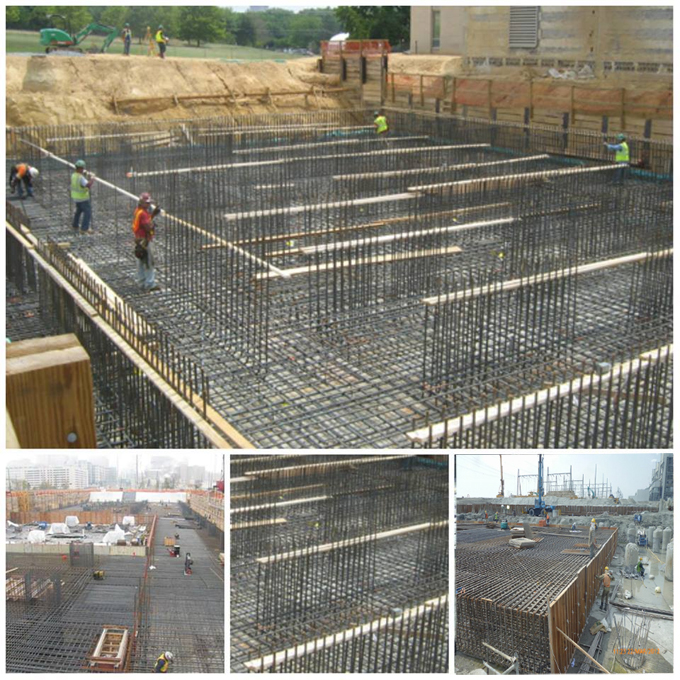
Step-by-step processes for designing a raft foundation
Guidelines for design: When the columns inside a structure carry heavy loads or minor tolerable soil pressure, the individual footings would cover over one-half of the area approximately, it is hereby recommended to arrange a continuous footing below all columns and walls. Such type footing is known as a raft or mat foundation. Raft foundations can also be applied for lessening the settlement of structures which remain over highly compressible deposits. As rafts are generally positioned at some deepness in the ground, a huge volume of excavation is essential. If the weight of the excavated soil remains same as the weight of the structure and the raft, and the centres of gravity of excavation and structure overlap, settlement would be less important. Where complete compensation can?t be achieved, a shallower raft should be used when the net escalation in loads is too minor to cause supportable settlement.
If the columns are set evenly and loads do not contain heavyweight, a raft is designed with unvarying thickness. The standard design of such a raft includes settling its dimensions, from which the soil pressure at different locations below the slab may be worked out. The raft is segregated into a slew of continuous strips placed at center position on the suitable columns and rows in both directions as demonstrated. The shear and bending moment diagrams are sketched with continuous beam analysis or coefficients for each strip. The depth is chosen to fulfill shear requirements.
The steel requirements will change from strip to strip. This process provides a conservative design as the interaction of nearby strip is ignored.
If the columns are placed at equal gap and their loads are same, the pressure delivered to the soil will be even, or else moments of the loads are captured about centre of the base and pressure distribution is set. As the equations for this are generally acquired for a rigid member and a raft generally is not considered as a rigid member, the pressure and the consequential internal stresses will contain error when the eccentricity is very huge. The weight of the raft is not taken in the structural design as it is supposed to be supported directly with the subsoil.
Raft may be ribbed when the gapping of column is unequal or a comparatively thin slab is applied for low-cost over most of the area as demonstrated in fig.4. On the other hand, rafts are condensed at the column locations for low-cost and there should be adequate depth to withstand shear. A ribbed raft foundation includes a slab affected by upward soil pressure at its underside and supported with beams from column at its top which maintain symmetry between the upward pressure and downward column loads. It is same as a floor slab resting on a system of beams and columns. The part among beams is designed as a standard one way or two way slab. If the beams are deep, they will be designed as deep beams.
Download Raft Foundation Sheet in Excel

Ref: theconstructor.org

